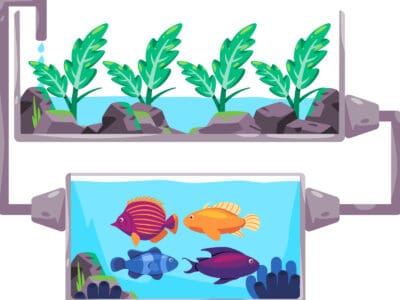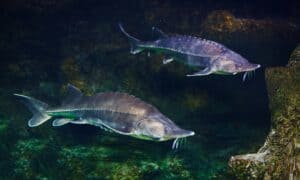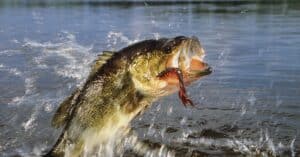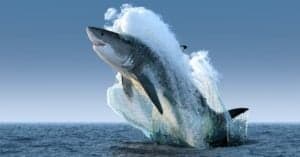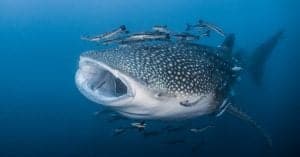What Do Glofish Eat?
@media (min-width: 481px) {
.mobile-top-content {
display: none;
}
}
#mobileTopContentCTACarouselControls { overflow: hidden; text-overflow: ellipsis; white-space: nowrap; }
.mobile-top-content .more { color: #fff; }
.mobile-top-content a { color: #fff; text-decoration: underline; }
.mobile-top-content a:hover { color: #fff; text-decoration: underline; }
@media (max-width: 480px) {
.mobile-top-content {
background-color: #06a10b;
color: #fff;
text-align: center;
/*height: 60px;
padding-top:5px;*/
font-size:80%;
/* display: block; */
margin: 0px -30px;
}
}
GloFish are a species of glowing fish originally created to identify polluted waterways. The ornamental pet market is now their main producer. Zebrafish (Brachydanio rerio) are a striped freshwater species that are commonly found in aquariums. To produce GloFish, genes from sea anemone and jellyfish were introduced into wild zebrafish. This altered the zebrafish so that they expressed fluorescent proteins. As a result, GloFish have a bright neon glow visible in daylight and nighttime conditions.
There are six different colors of GloFish: Starfire Red, Electric Green, Sunburst Orange, Cosmic Blue, Galactic Purple, and Moonrise Pink. Each generation of GloFish inherits their unique colors from their parents. They maintain those colors throughout their life and pass them onto future offspring. So, what do you feed these fluorescent fish? What do GloFish eat?
What Do Glofish Eat?

A-Z-Animals.com
GloFish eat a diet of fish flakes, pellets, and frozen or freeze-dried foods formulated for ornamental pets. They are an omnivorous species that do best on a diet specially formulated for them.
GloFish are a species of fluorescent, transgenic zebrafish. GloFish benefit from foods high in carotenoids and beta carotene. These help to keep them thriving and keep their colors vibrant. Overall, the higher their diet quality, the healthier and more vibrant they will be.
A formulation called GloFish Special Flake Fish Food was developed specifically for GloFish. It consists primarily of fish meal, ground brown rice, dried yeast, shrimp meal, wheat gluten, and fish oil. Any high-quality tropical fish food will work well. GloFish diets can be supplemented with live, frozen, or freeze-dried options weekly. GloFish and zebrafish diets differ largely due to their unique habitats. Wild zebrafish are also omnivorous and eat a variety of plankton, insects, larvae, and worms.
Where Do GloFish Live?
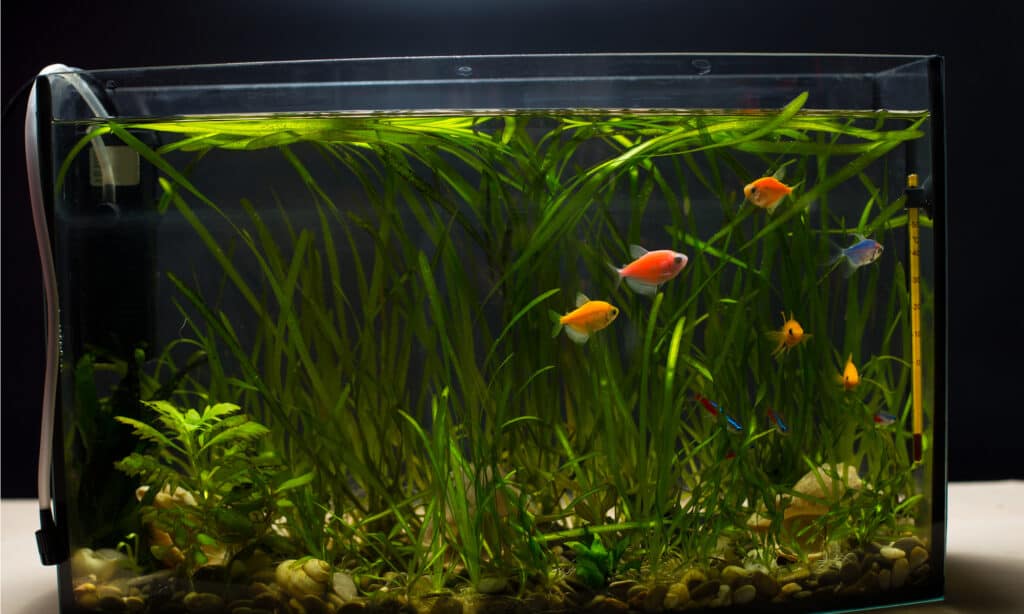
Sergiy Akhundov/Shutterstock.com
Glofish are a transgenic species of fish. This means that they were genetically engineered by humans. They went on sale in the United States on January 5, 2004, as the first commercially available genetically-engineered animal. A genetically engineered animal is one that has had a change in its DNA through the use of the human technological intervention. They undergo mutations that do not naturally occur in the population. Gene insertion or some other means of mutation initiates changes that alter the species. It is unknown how GloFish will react to wild habitats or how they will affect other species. Therefore, you shouldn’t release GloFish into the wild.
Due to being genetically-engineered animals, Glofish are freshwater fish that live in aquariums. As a schooling species, it’s best to keep them in groups of five or more. The only exception is the case of the GloFish Shark and GloFish Betta. These fish are territorial and should be the only ones of their kind in the tank. As descendants of fish species other than zebrafish, they have unique tank requirements.
If GloFish are grouped with other fish species, they should be similarly active and social species. GloFish species swim around a lot in nearly constant movement. Ideally, GloFish tanks will have some bushy plants toward the rear of the tank, with the front left open for swimming. Every 2.5 gallons of water can support 1 Glofish. An ideal tank would be 20 gallons of water for a school of about six fish.
How to Feed Glofish

snoymonkey/Shutterstock.com
In ideal conditions, GloFish eat small amounts twice per day. One schedule would be to feed them once in the morning and once in the evening. Careful monitoring, while they eat, is important until you get a sense of their feeding habits. It would be best if you fed them no more than they’ll eat in about 1 to 2 minutes. Ensure to thaw frozen foods before you give them to your fish, as they can be sensitive to temperature.
Water Care for Glofish

Varvara Voinarovska/Shutterstock.com
We now know what GloFish eat. However, water is just as important to these glowing swimmers. To keep GloFish healthy, they need excellent water quality and regular water changes. Adequate filtration is very important as well.
A good schedule to follow is this: Check the water filter, water temperature, and other tank equipment daily. Test the water quality at least once a week. Also, either weekly or monthly, change 10-25% of the total volume of water. Doing this every 2 to 4 weeks should keep the tank fresh and healthy for your fish. Change water filter media monthly. One final tip for tank wellness is to avoid overcrowded conditions. If there are too many GloFish for the size of the tank, it can lead to stress and disease. With proper care, they can live up to 8 years!
More from A-Z Animals
.more-snake-card-image { max-height:140px !important; }
@media (min-width: 481px) {
.mobile-top-content {
display: none;
}
}
#mobileTopContentCTACarouselControls { overflow: hidden; text-overflow: ellipsis; white-space: nowrap; }
.mobile-top-content .more { color: #fff; }
.mobile-top-content a { color: #fff; text-decoration: underline; }
.mobile-top-content a:hover { color: #fff; text-decoration: underline; }
@media (max-width: 480px) {
.mobile-top-content {
background-color: #06a10b;
color: #fff;
text-align: center;
/*height: 60px;
padding-top:5px;*/
font-size:80%;
/* display: block; */
margin: 0px -30px;
}
}
GloFish are a species of glowing fish originally created to identify polluted waterways. The ornamental pet market is now their main producer. Zebrafish (Brachydanio rerio) are a striped freshwater species that are commonly found in aquariums. To produce GloFish, genes from sea anemone and jellyfish were introduced into wild zebrafish. This altered the zebrafish so that they expressed fluorescent proteins. As a result, GloFish have a bright neon glow visible in daylight and nighttime conditions.
There are six different colors of GloFish: Starfire Red, Electric Green, Sunburst Orange, Cosmic Blue, Galactic Purple, and Moonrise Pink. Each generation of GloFish inherits their unique colors from their parents. They maintain those colors throughout their life and pass them onto future offspring. So, what do you feed these fluorescent fish? What do GloFish eat?
What Do Glofish Eat?

A-Z-Animals.com
GloFish eat a diet of fish flakes, pellets, and frozen or freeze-dried foods formulated for ornamental pets. They are an omnivorous species that do best on a diet specially formulated for them.
GloFish are a species of fluorescent, transgenic zebrafish. GloFish benefit from foods high in carotenoids and beta carotene. These help to keep them thriving and keep their colors vibrant. Overall, the higher their diet quality, the healthier and more vibrant they will be.
A formulation called GloFish Special Flake Fish Food was developed specifically for GloFish. It consists primarily of fish meal, ground brown rice, dried yeast, shrimp meal, wheat gluten, and fish oil. Any high-quality tropical fish food will work well. GloFish diets can be supplemented with live, frozen, or freeze-dried options weekly. GloFish and zebrafish diets differ largely due to their unique habitats. Wild zebrafish are also omnivorous and eat a variety of plankton, insects, larvae, and worms.
Where Do GloFish Live?

Sergiy Akhundov/Shutterstock.com
Glofish are a transgenic species of fish. This means that they were genetically engineered by humans. They went on sale in the United States on January 5, 2004, as the first commercially available genetically-engineered animal. A genetically engineered animal is one that has had a change in its DNA through the use of the human technological intervention. They undergo mutations that do not naturally occur in the population. Gene insertion or some other means of mutation initiates changes that alter the species. It is unknown how GloFish will react to wild habitats or how they will affect other species. Therefore, you shouldn’t release GloFish into the wild.
Due to being genetically-engineered animals, Glofish are freshwater fish that live in aquariums. As a schooling species, it’s best to keep them in groups of five or more. The only exception is the case of the GloFish Shark and GloFish Betta. These fish are territorial and should be the only ones of their kind in the tank. As descendants of fish species other than zebrafish, they have unique tank requirements.
If GloFish are grouped with other fish species, they should be similarly active and social species. GloFish species swim around a lot in nearly constant movement. Ideally, GloFish tanks will have some bushy plants toward the rear of the tank, with the front left open for swimming. Every 2.5 gallons of water can support 1 Glofish. An ideal tank would be 20 gallons of water for a school of about six fish.
How to Feed Glofish

snoymonkey/Shutterstock.com
In ideal conditions, GloFish eat small amounts twice per day. One schedule would be to feed them once in the morning and once in the evening. Careful monitoring, while they eat, is important until you get a sense of their feeding habits. It would be best if you fed them no more than they’ll eat in about 1 to 2 minutes. Ensure to thaw frozen foods before you give them to your fish, as they can be sensitive to temperature.
Water Care for Glofish

Varvara Voinarovska/Shutterstock.com
We now know what GloFish eat. However, water is just as important to these glowing swimmers. To keep GloFish healthy, they need excellent water quality and regular water changes. Adequate filtration is very important as well.
A good schedule to follow is this: Check the water filter, water temperature, and other tank equipment daily. Test the water quality at least once a week. Also, either weekly or monthly, change 10-25% of the total volume of water. Doing this every 2 to 4 weeks should keep the tank fresh and healthy for your fish. Change water filter media monthly. One final tip for tank wellness is to avoid overcrowded conditions. If there are too many GloFish for the size of the tank, it can lead to stress and disease. With proper care, they can live up to 8 years!

